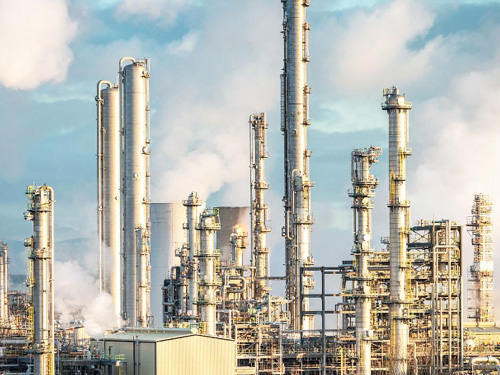
In the petrochemical industry, refining distillation equipment is essential for processing crude oil. Choosing the right equipment is crucial for improving production efficiency, optimizing product quality, and reducing operational costs. With many options available, how can businesses select the best equipment? This article explores key factors to consider when choosing refining distillation equipment to help companies make informed decisions.

I. Determine Production Needs and Goals
Production Capacity
The production capacity is a critical factor when selecting refining distillation equipment. The equipment must match the production scale to ensure stable operations and efficient material handling. Companies should choose the appropriate model and specifications based on their needs to avoid overinvestment or insufficient capacity.
Product Specifications
Different refining distillation equipment suits various product specifications. Ensure the equipment can meet the required product types and specifications, such as light hydrocarbons, heavy hydrocarbons, and petroleum gases. This ensures that the final products meet market demands and quality standards.
II. Evaluate Technical Parameters
Distillation Efficiency
Distillation efficiency affects production capacity and product quality. Efficient distillation equipment separates crude oil components better, increasing yield and purity. Choose equipment with high distillation efficiency for finer separation and better economic returns.
Energy Consumption
Energy consumption impacts operational costs and environmental compliance. Low-energy equipment reduces production costs and minimizes environmental impact. Look for advanced energy-saving technologies and efficient heating and cooling systems.
Cooling and Heating Systems
Cooling and heating systems are vital components of refining distillation equipment. Effective systems ensure stable temperature control and good distillation performance. Verify if the equipment has advanced cooling and heating features to meet different production needs.
III. Consider Equipment Stability and Reliability
Equipment Stability
Equipment stability affects production continuity and safety. Opt for well-designed, durable equipment to minimize failure rates and ensure long-term stable operation. Review technical parameters and performance indicators to confirm it can handle extended use.
Ease of Maintenance and Operation
Ease of maintenance and operation affects efficiency and costs. Choose equipment that is simple to maintain and easy to operate, reducing training and maintenance costs while boosting productivity. Check if the equipment includes automation controls for real-time monitoring and adjustments.
IV. Assess Economic Benefits
Initial Investment
Initial investment is a crucial consideration. Equipment cost usually correlates with performance and technology level. Choose equipment that offers high value for money according to your budget and requirements to maximize returns.
Operational Costs
Operational costs include energy consumption, maintenance, and coolant replacement. Equipment with lower operational costs provides better economic benefits over time. Conduct a cost-benefit analysis to assess overall economic viability.
Return on Investment (ROI)
ROI is a key metric for economic efficiency. Efficient equipment can boost production capacity and reduce costs, shortening the ROI period. Evaluate the return rate to ensure investment recovery within a reasonable timeframe.
V. Supplier and After-Sales Service
Supplier Reputation
Supplier reputation impacts equipment quality and after-sales service. Choose reputable suppliers to ensure equipment quality and access timely technical support. Research the supplier’s market reputation and customer feedback to find reliable partners.
After-Sales Service
After-sales service is crucial for equipment operation. Select suppliers that offer comprehensive after-sales support, including technical assistance, maintenance services, and spare parts supply. This ensures timely resolution of operational issues.
VI. Conclusion
Choosing the right refining distillation equipment is vital for optimizing production processes, improving product quality, and reducing costs. By considering production needs, technical parameters, equipment stability, economic benefits, supplier reputation, and after-sales service, businesses can make informed decisions for efficient production and investment returns. This guide aims to provide valuable insights for selecting refining distillation equipment and achieving success in the petrochemical industry.



